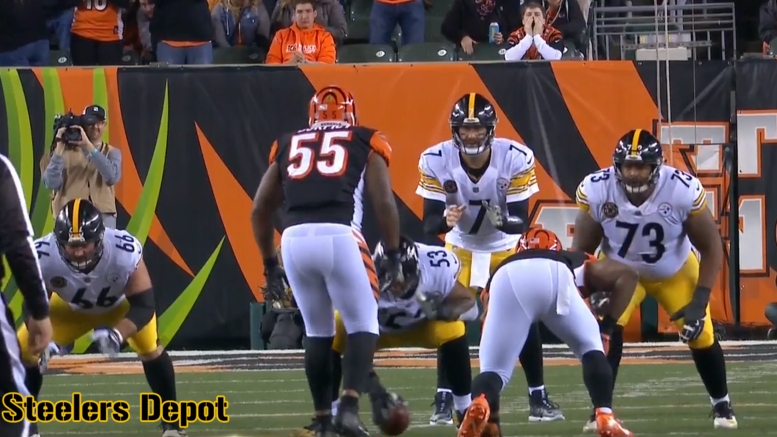Somebody asked yesterday if we would provide a little insight as to how the offseason might go from where we currently stand, so with the Collective Bargaining Agreement pushed back through to the end of the week, I thought I would take this time to do a little exercise, a thought experiment.
Specifically, I thought it would be of good use and provide some valuable perspective if I were to run through some scenarios the Pittsburgh Steelers might approach, if necessary, should the NFLPA vote not to approve the CBA. The team’s most common tool for creating cap space is restructuring, but their ability to create space in this way is limited.
The long and short of it is that the final year of a CBA is regulated by, among other things, the 30 percent rule, which stipulates that a player’s total compensation minus signing bonus in the first year beyond the CBA cannot rise above 30 percent of his compensation from the final year of the CBA. That puts a cap on how much of a player’s base salary and roster bonuses they can turn into a signing bonus.
Earlier in the offseason, Dave Bryan already ran through the example of Ben Roethlisberger, whose current contract runs through 2021. His total 2021 compensation is $19 million, so his 2020 compensation must be within a certain level such that $19 million does not represent a 30 percent increase.
That comes out to a ballpark figure of about $14.6 million, which means of his $21 million compensation in 2020, only about $6.4 million can be converted into a signing bonus. Given that it only gets spread out over two years, that means the team would only save about $3.2 million on a maximum restructure of Roethlisberger’s contract under the 30 percent rule.
You’re probably thinking, who are the other candidates? Stephon Tuitt, David DeCastro, Joe Haden, Steven Nelson, and Maurkice Pouncey are the names that I come up with. Of the five, only Tuitthas more than two years remaining, so let’s start with him.
I’m using ballpark figures here for the sake of ease. He is scheduled to make $9 million in 2021, which limits the maximum amount the team can convert into a signing bonus around $2 million, since he is also making $9 million in 2020. They would be able to save about $1.3 million from him. Not a lot.
Each of DeCastro, Haden, Nelson, and Pouncey have a 2021 compensation total even less than $9 million, and with only two years remaining on their deals, it quickly becomes apparent that there isn’t much meat on the bone. All of them have identical compensation totals in both 2020 and 2021, the highest being DeCastro at $8.75 million, so let’s do his deal.
The 30 percent rule puts the floor for his 2020 compensation at $6,730,769, so the total they can convert into a signing bonus is $2,019,231. Divide that over two years, and you get $1,009,616. Considering the minimum salary under the Rule of 51 right now is $510,000, a maximum 30 percent rule restructure of DeCastro’s contract creates only $499,616 in cap space. I’ve put them all together in a chart below:
| Player | 2020 Compensation | 2021 Compensation | 30 Percent Rule Figure | Maximum Restructure | Years Remaining | Cap Savings |
|---|---|---|---|---|---|---|
| Ben Roethlisberger | $21,000,000 | $19,000,000 | $14,615,385 | $6,384,615 | 2 | $3,192,308 |
| Stephon Tuitt | $9,000,000 | $9,000,000 | $6,923,077 | $2,076,923 | 3 | $1,384,615 |
| David DeCastro | $8,750,000 | $8,750,000 | $6,730,769 | $2,019,231 | 2 | $1,009,615 |
| Joe Haden | $7,000,000 | $7,000,000 | $5,384,615 | $1,615,385 | 2 | $807,692 |
| Steven Nelson | $8,250,000 | $8,250,000 | $6,346,154 | $1,903,846 | 2 | $951,923 |
| Maurkice Pouncey | $8,000,000 | $8,000,000 | $6,153,846 | $1,846,154 | 2 | $923,077 |
| Total | $8,269,231 |
The pickings are slim for restructures if a new CBA is not passed, but if they really try to pull out all the stops, they can finagle about $8 million in salary cap space. They can also create around $17 million in total by releasing Ramon Foster, Anthony Chickillo, and Mark Barron and declining Vance McDonald‘s option. All told, they could give themselves in the ballpark of $26-27 million in cap space.
Bud Dupree‘s franchise tag would cost around $15.7 million after roster displacement, so they would still have over $10 million to figure out what to do with Mike Hilton, Matt Feiler, Zach Banner, and B.J. Finney (and Tyler Matakevich, to a lesser extent). Suffice it to say, things would be a lot easier without the 30 percent rule. Remember, Hilton and Feiler were undrafted free agents, so they would have to be given second-round tenders that cost over $3 million apiece. And then there are all of the usual predictable costs to consider for later on in the year.
One thing that is really eye-opening regarding how limiting the 30 percent rule is the reality that, with the exception of Roethlisberger, the Steelers could create as much or more cap space by releasing Daniel McCullers, who is due $1.5 million this year, than they could by restructuring the contracts of most of their most highly-compensated players. This is why Dave warned you restructures may be limited this offseason, but barring a long-term deal with Dupree, they may not have any choice but to pinch pennies.








